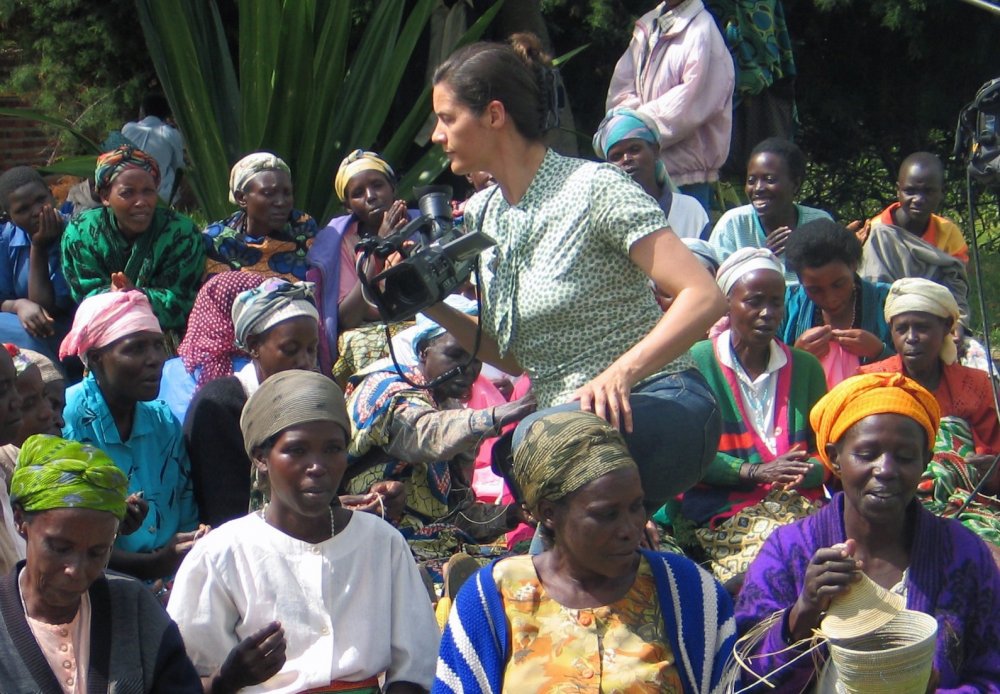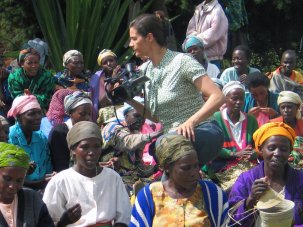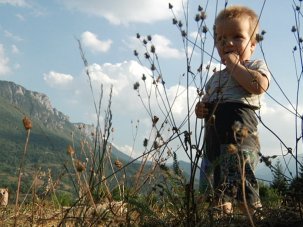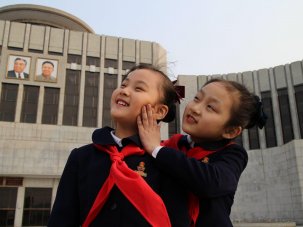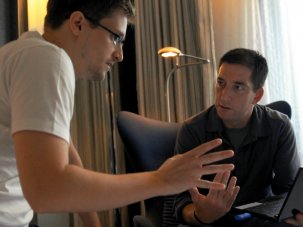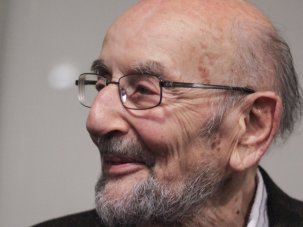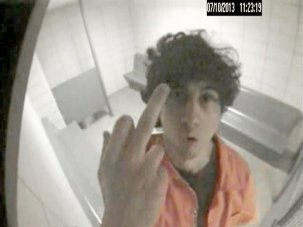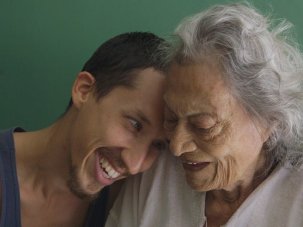“Observing people in the context in which they’re under a great deal of pressure, we often see their humanity,” says Kirsten Johnson. It’s a neat manifesto for her practice as the leading American documentary cameraperson – for example, on Laura Poitras’s exploration of the US whistle-blower Edward Snowden and the NSA spying scandal, Citizenfour (2014), which not only won the Academy Award for Best Documentary Feature, but drew potent attention to the ethics of media in an era of state surveillance. It was Johnson’s second film with Poitras after The Oath (2010), about the Taliban and Guantánamo; they are now working on a third. She also shot Kirby Dick and Amy Ziering’s The Invisible War (2011), a crusading indictment of rape in the US military, which was nominated for an Oscar the year before Citizenfour.
There’s only one blink-and-you’ll-miss-it reference to Citizenfour in Cameraperson, Johnson’s career-spanning documentary: a sequence preceded by an intertitle stating ‘[Location Redacted]’. It shows, in close-up, a thumb drive being mixed into cement, and the cement spread to form a paving stone. The grey claustrophobia of the sequence from Citizenfour suggests how global digital surveillance risks erasing the specificity of our identities: the very quality that, Cameraperson suggests, defines documentary. All the other sequences in the film are identified by their location. Johnson loves the freedom of a big sky: images of clouds and shots from high vantage points – buildings, a Kabuli Ferris wheel – punctuate the film. So focused is Johnson on the places and people in front of the camera that, when filming the French philosopher Jacques Derrida crossing a New York street, she falls over backwards into traffic.
Showing the falls, sneezes, awkward silences, military checkpoints, hesitations, refusals, passing traffic and personal experience often eschewed by the finished documentaries from which she takes her material, Johnson reinvents the documentary form by turning it inside out. “There is no one central question to this film,” Johnson says. “It is a multitude. I wanted to make a film in which I was allowed to ask as many questions as I have and not answer them.” Cameraperson offers no voiceover or authorial statement beyond the opening intertitle that asks the viewer to see it as Johnson’s memoir.
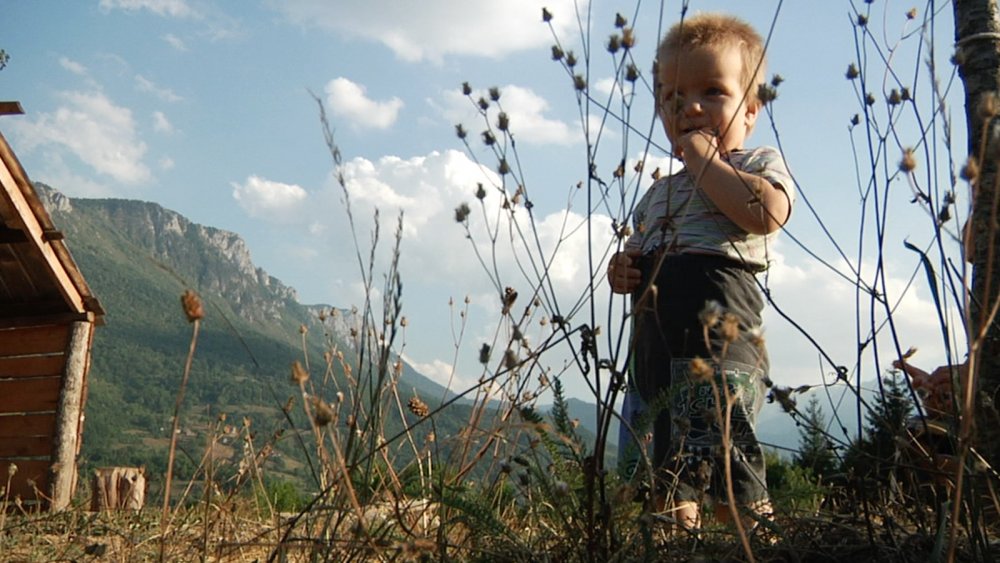
Cameraperson (2016)
Material from documentaries considered ‘political’, such as Citizenfour, is resignified through the inclusion of outtakes that brings them into the realm of the personal, but also through being intercut with Johnson’s home movies of her mother; and of her father and her children after her mother’s death. The inclusion of home movies positions it as ‘first-person’ documentary, to use the filmmaker Alisa Lebow’s term, but also reframes all documentary as ‘first person’ by asserting the sensibility of the cinematographer.
At the same time, the film offers an intimate history of contemporary American political documentary shaped by a loosely affiliated network – affiliated, not least, by Johnson’s work with Poitras, Dick and Ziering as well as Michael Moore and Dawn Porter. Her own film stresses documentary’s never-more-urgent function of offering longform investigation and extensive oversight into complex issues, including war crimes (the PBS TV series Women, War and Peace, 2011), racism in America (Whitney Dow and Marco Williams’s The Two Towns of Jasper, 2002) and the illegal invasion of Afghanistan (Moore’s Fahrenheit 9/11, 2004), all shot by Johnson and extracted in Cameraperson. The chillingly – and necessarily – oblique reference to Citizenfour underlines documentary’s significance in combatting phenomena variously described as fake news, post-truth politics and the social media bubble, all of which have emerged from and furthered the economic decline of traditional news media.
“In the shorthand of certain kinds of news media and the reductiveness of stereotypes, we stop admitting to ourselves that everyone is a human being, but documentary fights the simplicity of a single narrative,” Johnson says. Cameraperson suggests that it is now documentary, rather than newspapers, that can most effectively answer Juvenal’s question, “Who will watch the watchers?” Making use of the campaigning documentaries on which she has worked rather than aligning herself with them, Johnson also uses Cameraperson to watch watchers other than the state.
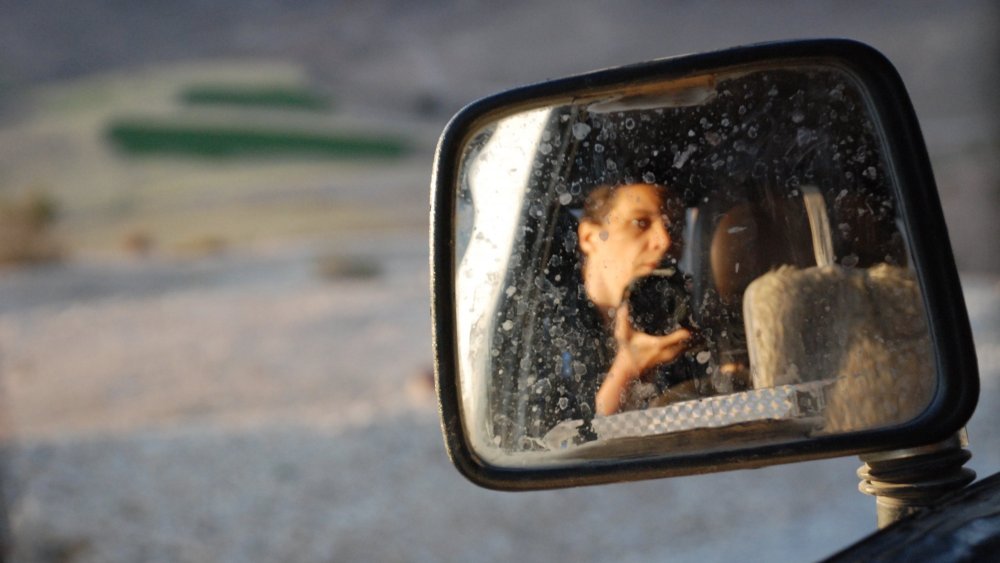
Cameraperson (2016)
First, there are the filmmakers with whom she has worked; the film makes judicious use of outtakes to reveal their strategies and ethics through offscreen conversations, as well as moments of anxiety and generosity off camera, such as when Moore follows up an interview for Fahrenheit 9/11 by offering Corporal Abdul Henderson USMC legal assistance if his on-camera refusal to be redeployed results in military charges.
Johnson’s portraiture of documentary subjects is also foregrounded, as faces, voices, stories and bodies register differently within Cameraperson than in the films from which the footage is taken. “When I ask the grandmother in Foca [in Bosnia] about fashion,” Johnson argues in relation to a particularly touching conversation in which the older woman refuses to talk about her experiences during the conflict, “I’m rebelling against the narrative where she is depicted as just a victim of genocide: that is a disservice.” Outtakes and cut material allow shots and sequences to run for longer, and because her subjects appear in vignettes removed from the arguments of their original films, they emerge as individuals, rather than instruments of an argument.
Forging such intense portraits from the landscapes of the original documentaries, Johnson offers oversight of a third group of watchers: us, documentary viewers, and our investment in concepts such as truth, authenticity, testimony, revelation, information – but also our reluctance to discern the ethical labour of selection and collation that might complicate such investments.
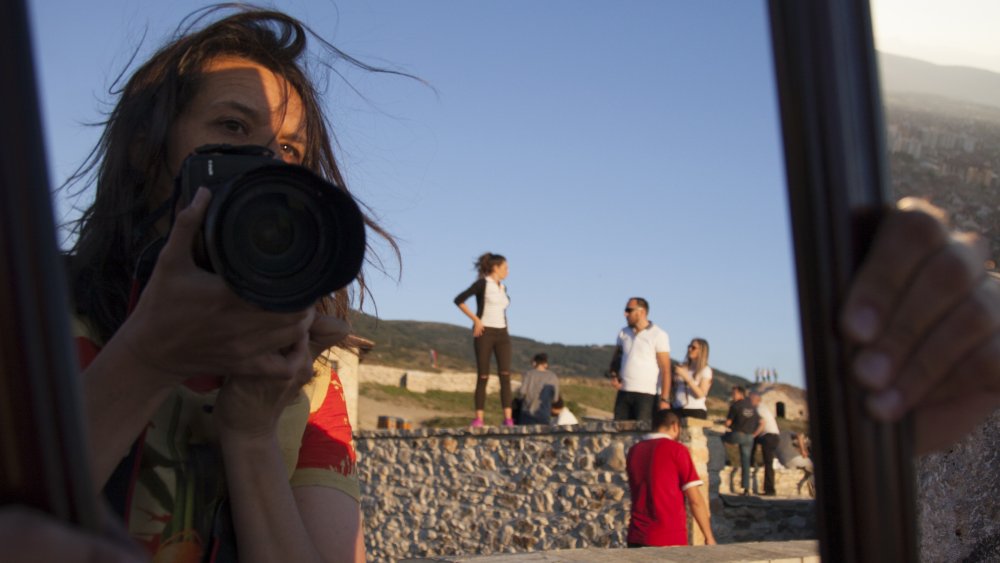
Cameraperson (2016)
At the midpoint of the film, Johnson confronts the viewer directly with these questions. There is a sequence of landscapes without human subjects as points of view, from Karaman’s House in Foca, Bosnia, which was used as a rape camp, to Camp X Ray in Guantánamo Bay, a prison where torture was deployed. The location and traumatic history of violence is given in subtitles, but it is Johnson’s unwavering gaze and poetic editing that conveys the markedness of these places. Extracting these landscape shots from their narrative or expository setting, Johnson also draws on the viewer’s knowledge of history, from the colonial massacre at Wounded Knee to the state-sponsored violence in Tahrir Square, demanding that we know – or learn – how to read these images.
“At a certain point we decided not to have voiceover in the film,” Johnson recalls. “It became clear that we would have to put footage in a particular order so there were the necessary tools for the viewer to make sense of it.” Cameraperson guides us to the grain of that reading through Johnson’s level, and levelling, ethnographic eye for her ‘home’ culture in the US, in sharp contrast to the Othering history of documentary: a scene of a mosque in Herat, Afghanistan is followed by a dance sequence, in which a dozen white teenage girls in modest, ankle-length white tutus dancing around a tulle-draped six-foot high crucifix. It is simply titled ‘Colorado Springs, Colorado’, but might as well have been shot in the theocratic Republic of Gilead described in Margaret Atwood’s dystopian novel The Handmaid’s Tale. Palpable in the edit is the evangelical Christian white supremacy that has covertly driven Republican politics, connecting this airy dance studio to Afghanistan.
They are connected, too, by gender politics: the Colorado dancers adhere to religiously mandated modest dress codes and sexual purity rules; there is only one woman in the mosque, a young girl – excepting Johnson behind the camera, subject of a discomfited and wary look from one of the men at prayer. Earlier, Johnson had cut from a sequence of a witness talking about a rape camp in Bosnia, to State College, Pennsylvania, where a football game is underway in Beaver Stadium: the first home game after the college’s former assistant football coach was charged with 52 counts of child sex abuse, again underlining that gender violence and inequality is endemic in US culture just as it is “over there”.
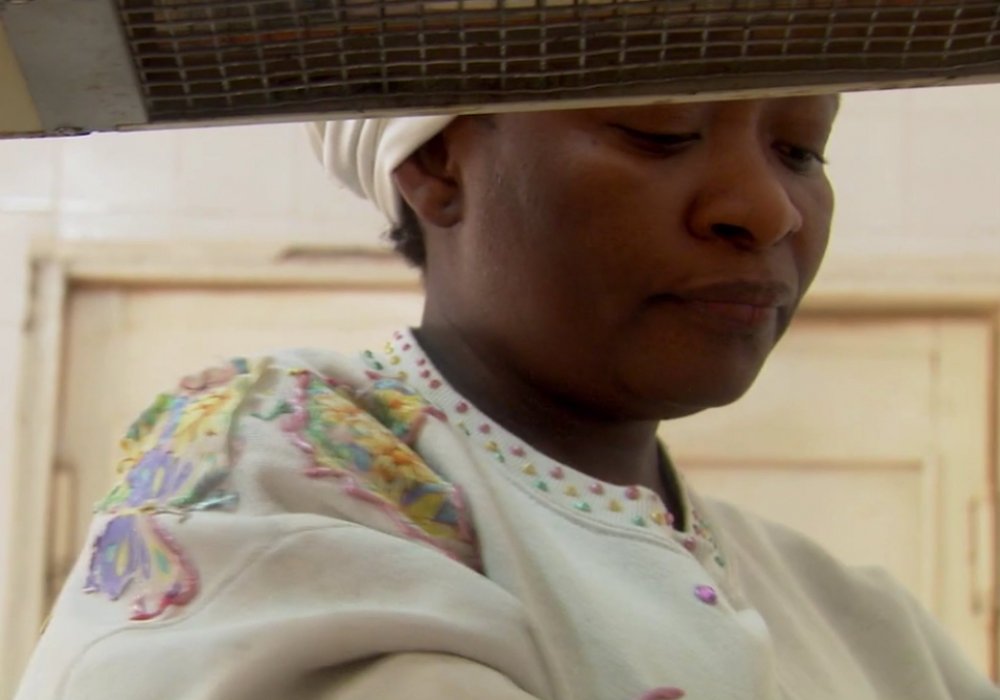
Cameraperson (2016)
Trapped, Dawn Porter’s 2016 documentary about the TRAP (Targeted Regulation of Abortion Providers) laws, which place such burdensome requirements on medical practices as to render abortion almost impossible, affirms the necessity for American documentary to watch American legislators. This retrogressive prevention of access to medical care is contrasted with the grace under pressure of Aisha Bukar, a Nigerian midwife in Kano, consummately competent despite working without basic 20th-century medical supplies.
Cameraperson implies that Johnson measures her ethical decisions, and those of the filmmakers with whom she works, against those of other professionals: the midwife who has to save a late, weak twin; the Bosnian investigators who collect rape survivors’ testimony; or the district attorney in the Texas murder case of James Byrd Jr. As Jasper County DA Guy James Gray ponders whether to show the camera the photo album of Byrd’s injuries that was prepared for the jury, ethical reflection flows across the barrier of the screen: Gray’s contemplation, held by the patient camera, becomes ours, inquiring into our investment in seeing images of terrible racist violence.
“I started the film from thinking about what had stayed with me and troubled me,” Johnson says, pointing to what she’d filmed in Nigeria and the Texas courtroom. “They were images of terrible violence, questioning whose bodies get shown – often the bodies of the poor, and of brown people – and whose right it is to show those bodies. What are the ethics of working to create indelible images? Those are images that, by definition, scar people, and that’s what I’m being asked to do.”
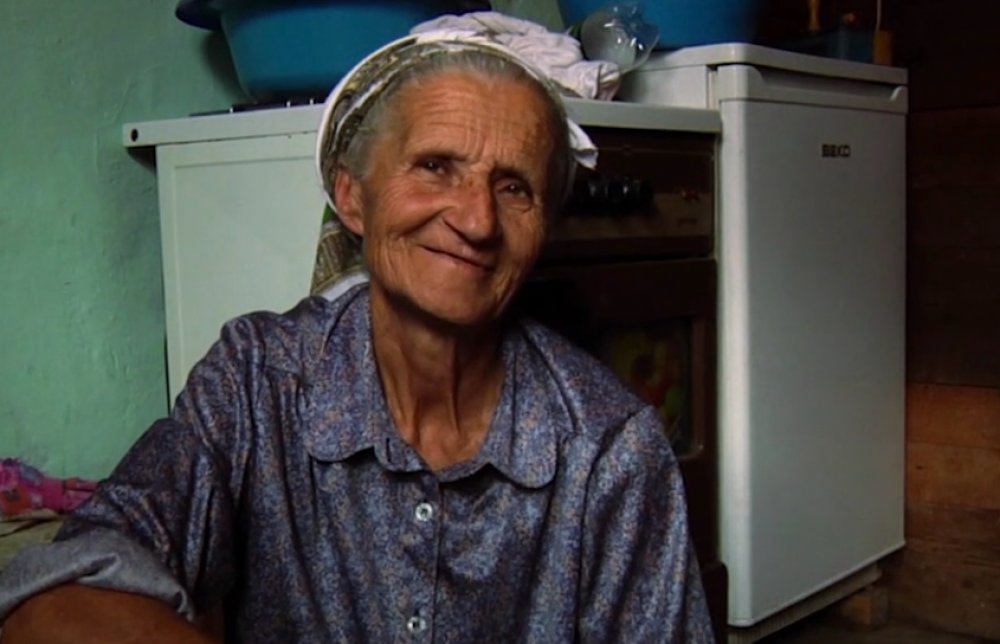
Cameraperson (2016)
The film directs its inquiries into our compulsion to look through its astonishing attention to the body: Cameraperson is the furthest thing from a talking-heads documentary. Here, in place of talking we see Gray’s head bent over the photograph album, shielding it from the camera, or by the non-verbal eloquence with which the witness and investigators in Bosnia wield their cigarettes. Non-verbal communication is paramount, whether it’s a young Kabuli boy demonstrating his vision loss from an explosion, or a young woman – her face never seen – communicating the anguish of an unplanned pregnancy through her fists clenching against her thighs.
“I wanted to raise questions about our relationship to the agency of the people that we film, whether it’s possible to truly have people’s permission or not; in many cases, their permission is compromised in how it is granted,” Johnson says. “I’m implicating myself in the conundrum of this work of showing the lives of others by also showing my mother.” In the film, her late mother Catherine, who had Alzheimer’s, is shown exploring the Wyoming log cabin where she grew up. Johnson asks questions from behind the camera, keeping it fixed on her mother’s unsteady gait and gestures, and on the waves of clarity and doubt that pass over her face.
Johnson, who describes her next project as director as “a comic documentary made with my father: he’ll be in front of the camera, but we’ll be collaborating,” places herself in the film as the generational pivot between her mother and her own children, as she is the pivot between viewer and subject. She briefly, finally, appears on camera herself, as a daughter, when she lets her mother brush her hair. She is also perhaps measuring herself against, and paralleling herself with, her mother in these moments: the documentary-maker may be an ethical professional – but she is also a fallible and loved, if partial, guide, struggling toward truth.
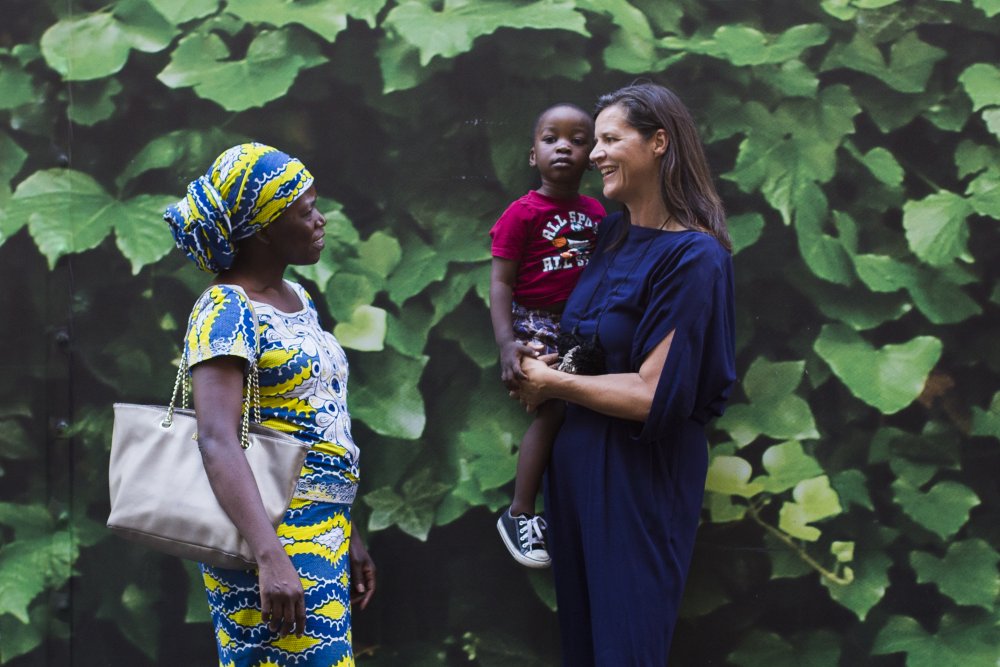
Cameraperson (2016)
It is through this radical sense of doubt that Cameraperson offers its most profound testimony and radical stance against fake news and post-truth. “The film is about indicating how many more narratives are always possible,” Johnson notes. “And they are all factual narratives. Each individual is so complex, each situation is so complex, there are many different stories that could be told that are true, and that’s what I’m interested in, always paying attention to the details.”
“Look at the baby looking,” says the midwife in Nigeria as she places the first-born twin into a crib. If Johnson positions herself in relation to professionals whose unwavering gazes offer protection through their investigation of the worst of human behaviour, she also locates herself with the bright-eyed child observing the world cautiously and exuberantly, seeking such protection. There are children everywhere in Cameraperson, and they are not regarded as better seen than heard – even when they are playing with an axe on a family farm in Foca. Johnson’s toddler twins look directly into the camera, and speak to the person behind it, the person they love and depend on.
Through them, above all, Cameraperson asserts documentary as a practice – and documentation – of interdependence, of the connections between people, of our need for each other’s care. Johnson’s toddlers are the viewer’s mirror: like the baby in Nigeria, we are learning how to look – and how, before the surveillance state renders it impossible, to speak about what we see, and how we are seen.
-
The Greatest Documentaries of All Time poll
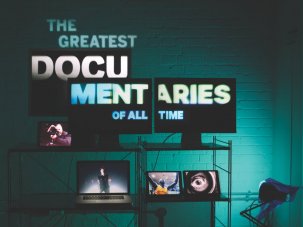
What are the greatest documentaries ever made? We polled 340 critics, programmers and filmmakers in the search for authoritative answers.
-
The Digital Edition and Archive quick link
Log in here to your digital edition and archive subscription, take a look at the packages on offer and buy a subscription.




